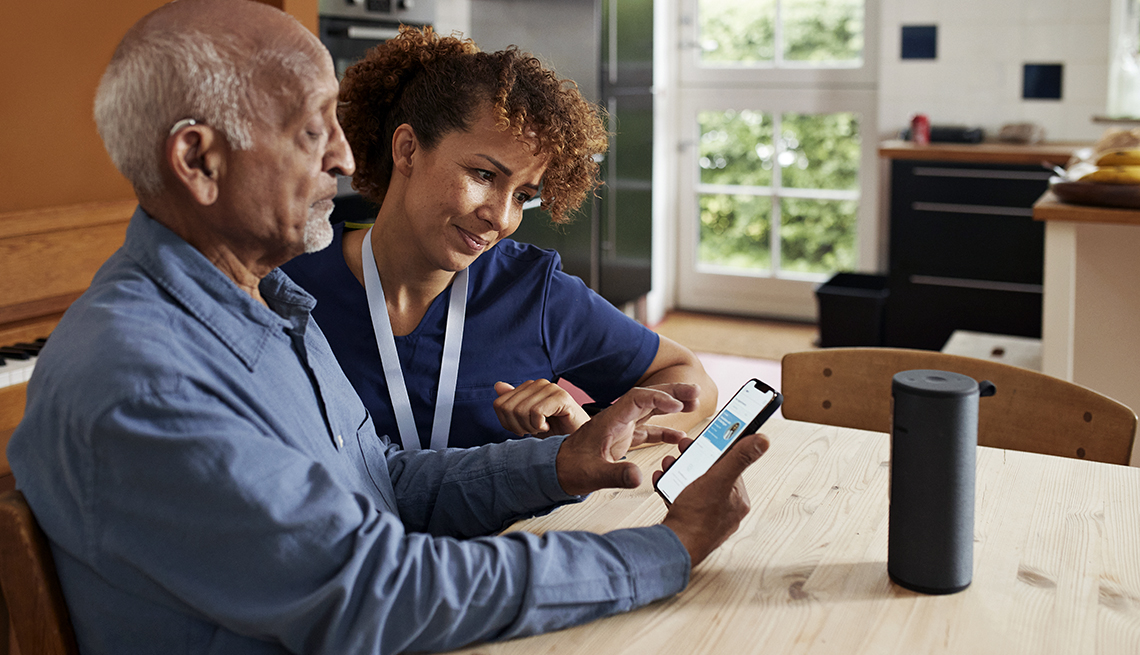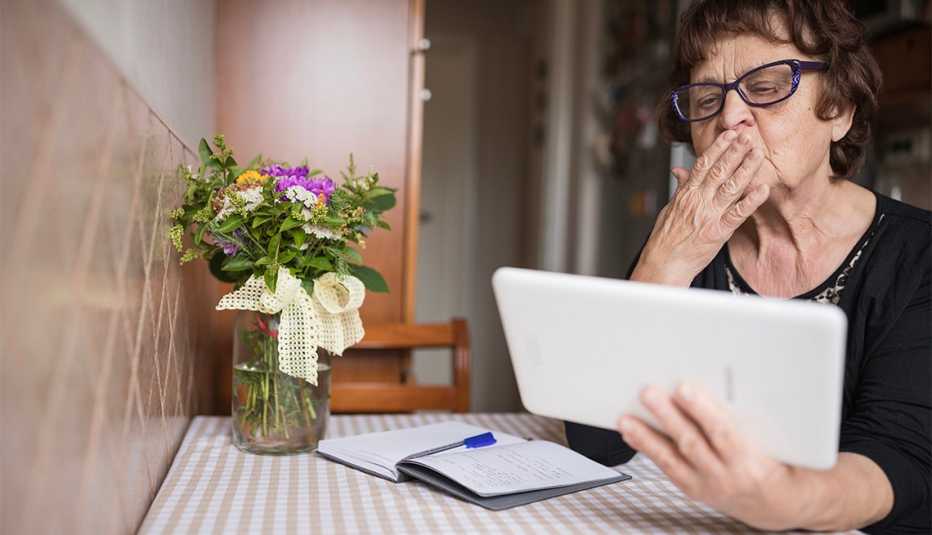AARP Hearing Center
Is your loved one aging in place? Part of helping someone do that successfully involves limiting risks — but at the same time allowing for Mom, Dad or another family member to maintain independence. Consider these smart choices around the house for added safety, autonomy and a sense of connection.
1. Smart speakers
These multipurpose devices function like voice-controlled virtual assistants: Ask to listen to music, set medication reminders, hear the weather forecast or even control compatible home fixtures such as a smart thermostat with the sound of your voice.
2. Nonslip rug grips
Slippery area rugs pose a fall risk and can be tricky to navigate for those who use mobility aids like a walker or cane. If you don’t want to remove area rugs altogether, consider adding a nonslip layer for safety: Opt for a nonskid carpet pad under each rug, or use adhesive corner grips or double-sided carpet tape to secure edges and keep corners from curling.
3. Digital photo frames
Bring the family photo album into the future with digital photo frames , which can cycle through favorite snapshots by using a USB memory stick or memory card or by connecting to your home Wi-Fi network. These digital photo frames let you post pics of friends, family and experiences, and a range of style options will let you match existing home decor.
4. Bathroom upgrades
The bathroom is one of the places in the home where accidents are more likely to occur, says eldercare consultant Marcy Baskin, a certified senior adviser and managing director at Senior Care Authority. Age-friendly bathroom upgrades include grab bars (mount them in the shower and by the toilet), add-ons like a shower chair or raised toilet seat and, if possible, renovations like a walk-in shower and a wheelchair-friendly sink.
5. Robot vacuums
Robot vacuums take the drudgery and physical strain out of vacuuming by working automatically to keep floors clean and clear of dirt, dust and other debris. Some even boast features like automatic emptying, or integration with a smartphone app or smart speaker for added control over scheduling and assigning cleaning zones.






































































